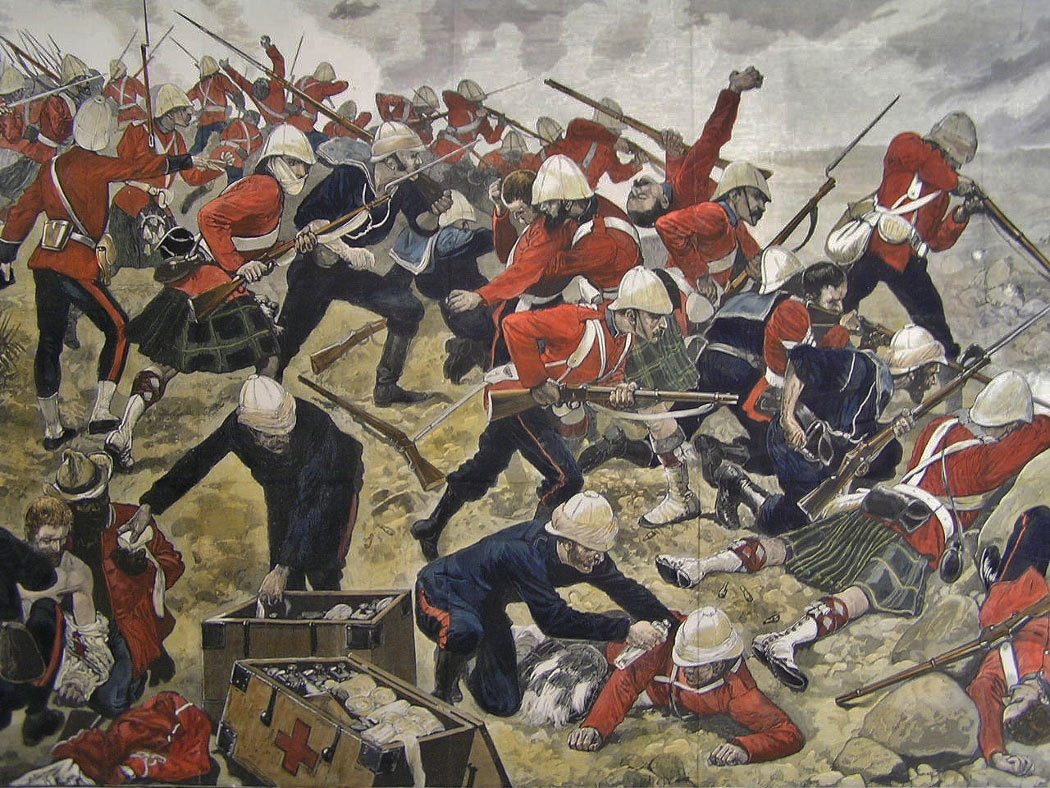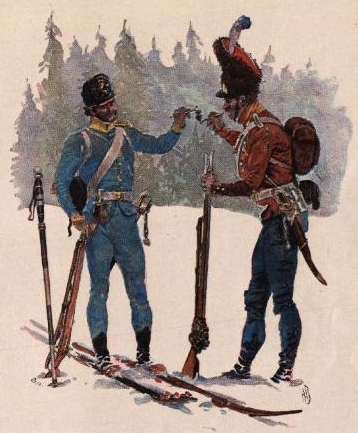|
Andreas Melchior Seip Diesen
Andreas Melchior Seip Diesen (23 September 1881 – 12 November 1958) was a Norwegian physician. He was the city physician () in Oslo, and member of the Administrative Council (Norway), Administrative Council in 1940. Personal life Diesen was born in Norderhov (later merged into Ringerike (municipality), Ringerike), a son of Norwegian Army, Army officer Ernst Georg Diesen and Anna Seip, and a brother of editor Emil Diesen. He married Sofie Elisabeth Aars Brodtkorb in 1912. They were the parents of actor and theatre director Ernst Diesen, and thus parents-in-law of actress Kari Diesen, and grandparents of journalist Andreas Diesen. Career Diesen graduated as cand.med. in 1908. He served as city physician () in Oslo from 1930 to 1951. During the early part of the German occupation of Norway, from April to September 1940, he was member of the Administrative Council (Norway), Administrative Council, where he served as Minister of Labour and Social Inclusion, Minister of Social Affa ... [...More Info...] [...Related Items...] OR: [Wikipedia] [Google] [Baidu] |
Norderhov
Norderhov is a former municipality located within Ringerike (municipality), Ringerike in Buskerud county, Norway. Municipality Norderhov municipality was established on January 1, 1838 (see formannskapsdistrikt). According to the 1835 census the municipality had a population of 7,234. On 22 April 1852 the city of Hønefoss was separated from Norderhov to constitute a separate administrative unit. In 1857 the rural district Ådal was separated from Norderhov, leaving Norderhov with a population of 6,846. In 1938 a part of Norderhov with 268 inhabitants was moved to Hønefoss, and on 1 January 1964 the rest was merged with Hønefoss, Ådal, Tyristrand and Hole, Norway, Hole to form the new municipality Ringerike (municipality), Ringerike. Norderhov was by far the largest municipality prior to the merger, with a population of 15,143. Parish The municipality (originally the parish) was named after the old farm Norderhov (Old Norse: ''Njardarhof''), since the first church was built t ... [...More Info...] [...Related Items...] OR: [Wikipedia] [Google] [Baidu] |
Store Norske Leksikon
The ''Great Norwegian Encyclopedia'' (, abbreviated ''SNL'') is a Norwegian-language online encyclopedia. It has several subdivisions, including the Norsk biografisk leksikon. The online encyclopedia is among the most-read Norwegian published sites, with up to 3.5 million unique visitors per month. Paper editions (1978–2007) The ''SNL'' was created in 1978, when the two publishing houses Aschehoug and Gyldendal merged their encyclopedias and created the company Kunnskapsforlaget. Up until 1978 the two publishing houses of Aschehoug and Gyldendal, Norway's two largest, had published ' and ', respectively. The respective first editions were published in 1906–1913 (Aschehoug) and 1933–1934 (Gyldendal). The slump in sales of paper-based encyclopedias around the turn of the 21st century hit Kunnskapsforlaget hard, but a fourth edition of the paper encyclopedia was secured by a grant of ten million Norwegian kroner from the foundation Fritt Ord in 2003. The f ... [...More Info...] [...Related Items...] OR: [Wikipedia] [Google] [Baidu] |
People From Ringerike (municipality)
The term "the people" refers to the public or Common people, common mass of people of a polity. As such it is a concept of human rights law, international law as well as constitutional law, particularly used for claims of popular sovereignty. In contrast, a people is any plurality of Person, persons considered as a whole. Used in politics and law, the term "a people" refers to the collective or community of an ethnic group or nation. Concepts Legal Chapter One, Article One of the Charter of the United Nations states that "peoples" have the right to self-determination. Though the mere status as peoples and the right to self-determination, as for example in the case of Declaration on the Rights of Indigenous Peoples, Indigenous peoples (''peoples'', as in all groups of indigenous people, not merely all indigenous persons as in ''indigenous people''), does not automatically provide for independence, independent sovereignty and therefore secession. Indeed, judge Ivor Jennings i ... [...More Info...] [...Related Items...] OR: [Wikipedia] [Google] [Baidu] |
1958 Deaths
Events January * January 1 – The European Economic Community (EEC) comes into being. * January 3 – The West Indies Federation is formed. * January 4 ** Edmund Hillary's Commonwealth Trans-Antarctic Expedition completes the third overland journey to the South Pole, the first to use powered vehicles. ** Sputnik 1 (launched on October 4, 1957) falls towards Earth from its orbit and burns up. * January 13 – Battle of Edchera: The Moroccan Army of Liberation ambushes a Spanish patrol. * January 27 – A Soviet-American executive agreement on cultural, educational and scientific exchanges, also known as the "Lacy-Zarubin Agreement, Lacy–Zarubin Agreement", is signed in Washington, D.C. February * February 1 – Egypt and Syria unite to form the United Arab Republic. * February 2 – The ''Falcons'' aerobatic team of the Pakistan Air Force led by Wg Cdr Zafar Masud (air commodore), Mitty Masud set a World record loop, world record performing a 16 aircraft diamon ... [...More Info...] [...Related Items...] OR: [Wikipedia] [Google] [Baidu] |
1881 Births
Events January * January 1– 24 – Siege of Geok Tepe: Russian troops under General Mikhail Skobelev defeat the Turkomans. * January 13 – War of the Pacific – Battle of San Juan and Chorrillos: The Chilean army defeats Peruvian forces. * January 15 – War of the Pacific – Battle of Miraflores: The Chileans take Lima, capital of Peru, after defeating its second line of defense in Miraflores. * January 24 – William Edward Forster, chief secretary for Ireland, introduces his Coercion Bill, which temporarily suspends habeas corpus so that those people suspected of committing an offence can be detained without trial; it goes through a long debate before it is accepted February 2. Note that Coercion bills had been passed almost annually in the 19th century, with a total of 105 such bills passed from 1801 to 1921. * January 25 – Thomas Edison and Alexander Graham Bell form the Oriental Telephone Company. February * Febru ... [...More Info...] [...Related Items...] OR: [Wikipedia] [Google] [Baidu] |
Minister Of Labour And Social Inclusion
Minister may refer to: * Minister (Christianity), a Christian cleric ** Minister (Catholic Church) * Minister (government), a member of government who heads a ministry (government department) ** Minister without portfolio, a member of government with the rank of a normal minister but who doesn't head a ministry ** Shadow minister, a member of a Shadow Cabinet of the opposition ** Minister (Austria) * Minister (diplomacy), the rank of diplomat directly below ambassador * Ministerialis, a member of a noble class in the Holy Roman Empire * ''The Minister'', a 2011 French-Belgian film directed by Pierre Schöller See also *Ministry (other) *Minster (other) Minster may refer to: * Minster (church), an honorific title given to particular churches in England Places England * Minster, Swale (or Minster-in-Sheppey), a town in Swale, Kent ** Minster-on-Sea, the civil parish * Minster-in-Thanet, a vill ... *'' Yes Minister'' {{disambiguation ... [...More Info...] [...Related Items...] OR: [Wikipedia] [Google] [Baidu] |
German Occupation Of Norway
The occupation of Norway by Nazi Germany during the Second World War began on 9 April 1940 after Operation Weserübung. Conventional armed resistance to the German invasion ended on 10 June 1940, and Nazi Germany controlled Norway until the capitulation of German forces in Europe on 8 May 1945. Throughout this period, a pro-German government named '' Den nasjonale regjering'' ('the National Government') ruled Norway, while the Norwegian king Haakon VII and the prewar government escaped to London, where they formed a government in exile. Civil rule was effectively assumed by the Reichskommissariat Norwegen (Reich Commissariat of Norway), which acted in collaboration with the pro-German puppet government. This period of military occupation is, in Norway, referred to as the "war years", "occupation period" or simply "the war". Background Having maintained its neutrality during the First World War (1914–1918), Norwegian foreign and military policy since 1933 was largely inf ... [...More Info...] [...Related Items...] OR: [Wikipedia] [Google] [Baidu] |
Norsk Biografisk Leksikon
is the largest Norwegian biographical encyclopedia. It is part of the '' Great Norwegian Encyclopedia''. Origin The first print edition (NBL1) was issued between 1923 and 1983; it included 19 volumes and 5,100 articles. Kunnskapsforlaget took over the rights to NBL1 from Aschehoug in 1995, and work began on a second print edition (NBL2) in 1998. The project had economic support from the Fritt Ord Foundation and the Ministry of Culture, and NBL2 was launched in the years 1999–2005, including 10 volumes and around 5,700 articles. Online access In 2009 an Internet The Internet (or internet) is the Global network, global system of interconnected computer networks that uses the Internet protocol suite (TCP/IP) to communicate between networks and devices. It is a internetworking, network of networks ... edition, with free access, was released by together with the general-purpose . The electronic edition features additional biographies, and updates about dates of ... [...More Info...] [...Related Items...] OR: [Wikipedia] [Google] [Baidu] |
Hvem Er Hvem?
''Hvem er hvem?'' () was a Norwegian book series, presenting facts about notable persons from Norway. The first edition was issued in 1912, and the 14th edition came in 1994. From 1938, the plan was to publish such a book every three years, but the Second World War made that impossible. At the time, such a book was published annually in Denmark and every two years in Sweden. In the 2008 edition, edited by Knut Olav Åmås, one thousand persons were selected for presentation. About one third of the articles are longer, signed biographies, while the rest have a shorter, more encyclopedic format. The latest edition was edited by Knut Olav Åmås and narrowed down to 1,000 people. This differs from the older ones in style in that the articles are in a more journalistic style with personal characteristics, in addition to the purely biographical year information. About 340 of the 1,000 biographies also have signed authors. Edition history *1912 (First edition, edited by Chr. Brinchm ... [...More Info...] [...Related Items...] OR: [Wikipedia] [Google] [Baidu] |
Ernst Diesen
Ernst Diesen (6 April 1913 – 14 November 1970) was a Norwegian revue and film actor and theatre director. Personal life Diesen was born on 6 April 1913 in Kristiania (now Oslo), Norway. He was the son of Andreas Melchior Seip Diesen (1881–1958) and Sofie Elisabeth Aars Brodtkorb (1885–1968). In 1937, he married the singer and revue actress Kari Diesen (1914–1987). They were the parents of Andreas Diesen. Career Diesen studied at the theater school operated by Max Reinhardt in Berlin from 1932 to 1933. He was a student at Det Nye Teater from 1933 to 1934. He worked for the revue theatre Chat Noir from 1934 to 1942 and as theater director from 1950 to 1953. He was at the Edderkoppen Theatre from 1943 to 1950 and again from 1954 to 1959. He also acted in several films, including the comedy films '' Bør Børson Jr.'' from 1938, ''Den forsvundne pølsemaker'' from 1941, '' Det æ'kke te å tru'' from 1942, ''Smuglere i smoking'', and ''Pappa tar gull'' from 1964. Diesen ... [...More Info...] [...Related Items...] OR: [Wikipedia] [Google] [Baidu] |
Norwegian Army
The Norwegian Army () is the land warfare service branch of the Norwegian Armed Forces. The Army is the oldest of the Norwegian service branches, established as a modern military organization under the command of the King of Norway in 1628. The Army participated in various continental wars during the 17th, 18th, and 19th centuries as well, both in Norway and abroad, especially in World War II (1939–1945). From December 1951, much of the Norwegian Army was declared for operations as part of Allied Forces Northern Europe, within the NATO Military Command Structure. History Creation of the Norwegian Army After the Kalmar War broke out in 1611, the Christian IV of Denmark, Danish-Norwegian king, Christian IV tried to revive the leidang, with dire results. As the Norwegian peasantry had not been armed or trained in the use of arms for nearly three centuries, they were not able to fight. The soldiers deserted or were captured. The soldiers had to participate in military drills w ... [...More Info...] [...Related Items...] OR: [Wikipedia] [Google] [Baidu] |




